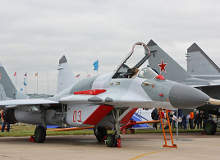ARTESH
Chief Master Sergeant
I do not know about details. I just know that there were a series of talkings about "renewals" in AF, from bases to air defence systems, radars and anything else.Grippen is 55% made out of US components - Swedes are unable to sell this airplane without permission from US.....
And surely all of these "visits" were happened bu US's Green Light, otherwise, no country would let "outsiders", or even "compatriots" to active military sites, airbases included.





